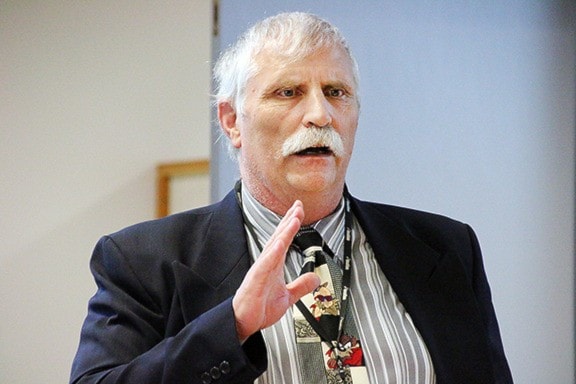A longstanding concern raised its head at the school board table last week as new trustees grappled with some home truths about how long students have to wait for the assessment of their behaviour problems.
Dr. Paul Hasselback, medical health officer for Central Vancouver Island, after talking about the mental health of students at all levels on the Island, answered questions.
Undiagnosed emotional and behavioural problems mean that a student may not secure a plan specifically designed to help him or her.
Teachers and parents have raised concerns for years before the board about long waiting lists for assessments and how children without them can slip through the cracks, not getting the benefit of help while causing disturbance in their classes at school.
Trustee Joe Thorne attacked the situation head on by telling Hasselback, “I have concerns about the assessments these kids are required to get and the time it takes to get them. I worry about student support because I don’t think it’s really being used as it could be, especially with my [First Nations] part of the neighbourhood.”
Some students, without help, can become “self-isolated” in school, he said.
Thorne said a situation has developed where the only time parents are getting a call is if someone’s son or daughter is in trouble.
“If some of the principals would take the time to say: ‘Let’s talk about your child,’ I’d tell them: ‘Good.’’
But seeing how long it takes between the time a teacher suggests that a child go through an assessment process to actually getting that appointment and having that assessment is more than time consuming, “it’s worrying,” he said.
“I understand that in some cases there’s a waiting list. What happens to that child? And that teacher has to struggle, too.”
There are other problems involved in dealing with behaviour problems, too, Thorne said.
Students can be kept home from school by parents, or there may be a denial factor along the lines of “It’s not my kid, it’s the teacher, or whatever. There’s a lot of things I’m trying to come to grips with. I appreciate what you said, and I understand, but I can only talk about what I see and who’s at my house every day.”
Hasselback thanked Thorne for bringing up the issue and “reflecting a lot of people’s sentiments.”
He said it was one of the main reasons he was addressing the board.
“Kids are challenged in quite different fashions than they have been in the past. Our systems aren’t necessarily responding,” he said.
Trustee Elizabeth Croft asked if economic wellbeing tracked alongside mental wellbeing and learned from Hasselback that “economic conditions are a high predictor” of emotional outcomes.
Trustee Rob Hutchins asked about the availability of child psychiatrists in the area covered by the jurisdiction.
The medical health officer told him the problem often comes down to finding someone to hire.
“This really is a supply and demand issue. As it is with most physicians, it comes down to whether they’ve received the training and if there is enough enticement for them to come to your community. Most of their income is based upon flow through. But there is a general dearth of child psychiatrists across the country,” he said.
Hutchins then asked, “So if you are informed there is a two-year wait for a child to see a child psychiatrist, do you act on that? Do you knock on some doors?”
Hasselback smiled ruefully.
“I have to say that if there was only a two-year wait, I think that would be pretty good. It’s multi-jurisdictional, I’ve never seen what a wait list looks like. It’s a really good question,” he said.
Thorne wasn’t done.
He wanted to share related issues he’s seen.
“Because teachers have 20-plus kids in their class, they can’t deal with just one particular child or two. So those kids are allowed to go to school maybe two hours a day,” he said.
Parents who can’t afford a sitter are forced into the position where one must quit work or they must alternate day and night shifts.
“It’s really complicated. It has to be addressed. I’m really hoping this board opens their eyes to the fact we need to start sitting down and talking to the teachers about what’s going on in their classrooms that we should know. There’s a lot going on,” he said.
In addition, trustees must also come to grips with the problem of parents who don’t want to recognize that their child has an issue.
“There are a lot of things that have to change. We have to start opening our eyes. The wait list is phenomenal. I’ve talked to several parents. They say, I’m so blessed tired of waiting. I don’t know what to do. It’s crazy,” Thorne said.
Hasselback then shared that other jurisdictions reported there are sometimes “50 per cent more students that require a similar level of service that are waiting for it.”
He agreed with Thorne about one difficulty.
“What’s becoming a more common problem is the parents aren’t providing consent to have the assessments undertaken and yet the school district is having to grapple with those situations,” the medical health officer said, adding, “I would encourage the board to ask those questions because it would be eye opening and would actually help, not just to refocus attention but to bring forward provincially the severity of the situation.”
